Breaking the Rules: Pushing Boundaries in Graphic Design to Create Iconic Designs!
Hey there and welcome to DonaldKevin.com as we take a look at Breaking The Rules: Pushing Boundaries In Graphic Design To Create Iconic Designs! I don’t know about you but I like to break the rules from time to time and in the world of graphic design, creativity knows no bounds. Graphic designers have the power to captivate their audience and leave a lasting impression through their artwork. However, to truly make an impact, one must be willing to break the rules and push the boundaries of traditional graphic design. In this article, we will explore the importance of breaking graphic design rules and how it leads to the creation of iconic designs.

Embracing The Chaos In Graphic Design:
 While it is essential to have a basic understanding of design principles, it is equally necessary to know when and how to break them. In graphic design, rules are meant to be challenged, allowing designers to explore new territories and create visually stunning pieces. By embracing chaos and incorporating unconventional elements, designers can create designs that stand out from the crowd.
While it is essential to have a basic understanding of design principles, it is equally necessary to know when and how to break them. In graphic design, rules are meant to be challenged, allowing designers to explore new territories and create visually stunning pieces. By embracing chaos and incorporating unconventional elements, designers can create designs that stand out from the crowd.
Striking A Balance In Graphic Design:
 While breaking the rules in graphic design can lead to innovative and memorable creations, it is important to strike a balance. It is crucial to understand the fundamental principles of design before intentionally breaking them. This knowledge enables designers to make informed decisions and ensures that their work remains visually appealing and effective. By consciously bending the rules rather than completely disregarding them, designers can create designs that captivate the audience while still conveying the desired message.
While breaking the rules in graphic design can lead to innovative and memorable creations, it is important to strike a balance. It is crucial to understand the fundamental principles of design before intentionally breaking them. This knowledge enables designers to make informed decisions and ensures that their work remains visually appealing and effective. By consciously bending the rules rather than completely disregarding them, designers can create designs that captivate the audience while still conveying the desired message.
Typography Techniques In Graphic Design:
 Typography plays a vital role in the world of graphic design, and pushing its boundaries can yield stunning results. By experimenting with various fonts, sizes, and styles, designers can create typographic designs that are truly unique and eye-catching. From bold and playful to minimal and sophisticated, typography techniques can be used to evoke different emotions and enhance the overall design. Breaking traditional typographic rules can help designers create visually dynamic compositions that leave a lasting impression on the viewer.
Typography plays a vital role in the world of graphic design, and pushing its boundaries can yield stunning results. By experimenting with various fonts, sizes, and styles, designers can create typographic designs that are truly unique and eye-catching. From bold and playful to minimal and sophisticated, typography techniques can be used to evoke different emotions and enhance the overall design. Breaking traditional typographic rules can help designers create visually dynamic compositions that leave a lasting impression on the viewer.
Color Outside The Lines:
Color is a powerful tool in graphic design, and pushing its boundaries can lead to striking and memorable designs. Breaking the rules of color theory allows designers to create unexpected combinations and challenge traditional notions of harmony. By embracing unconventional color schemes, designers can evoke specific moods and emotions, making their designs stand out in a sea of conformity. Pushing the boundaries of color also opens up opportunities for unique branding and visual identities, helping businesses establish a distinctive and recognizable presence.

Breaking The Graphic Design Grid:
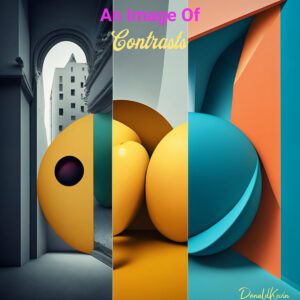 The grid is a fundamental principle of graphic design, providing structure and organization. However, pushing its boundaries can result in groundbreaking designs that capture attention. By breaking free from the confines of a strict grid, designers can create compositions that are visually dynamic and unexpected. This approach allows for greater creativity and experimentation, leading to designs that break the mold and become iconic. Embracing asymmetry, overlapping elements, and unconventional layouts can help designers push the boundaries of the grid and create designs that are truly remarkable.
The grid is a fundamental principle of graphic design, providing structure and organization. However, pushing its boundaries can result in groundbreaking designs that capture attention. By breaking free from the confines of a strict grid, designers can create compositions that are visually dynamic and unexpected. This approach allows for greater creativity and experimentation, leading to designs that break the mold and become iconic. Embracing asymmetry, overlapping elements, and unconventional layouts can help designers push the boundaries of the grid and create designs that are truly remarkable.
Negative Or White Space In Graphic Design:
 Negative space, often overlooked, is an excellent opportunity for breaking graphic design rules. By intentionally allowing blank spaces in a design, designers can create a sense of balance, simplicity, and elegance. Negative space highlights the main elements of a design and guides the viewer’s attention, resulting in visually striking and iconic designs.
Negative space, often overlooked, is an excellent opportunity for breaking graphic design rules. By intentionally allowing blank spaces in a design, designers can create a sense of balance, simplicity, and elegance. Negative space highlights the main elements of a design and guides the viewer’s attention, resulting in visually striking and iconic designs.
Utilizing Mixed Media:
Incorporating different mediums and techniques in graphic design can transcend traditional boundaries and open new doors for creativity. By merging digital and analog artwork, designers can create unique textures, gradients, and effects. The combination of various mediums adds depth and complexity to the designs, making them stand out in a crowded marketplace.

To Sum It All Up:
 Breaking the rules in graphic design is a powerful way to create iconic designs that leave a lasting impression. By pushing the boundaries of traditional design principles, designers can explore new territories, experiment with unconventional elements, and captivate their audience with visually stunning artwork. Through typography techniques, daring color choices, strategic use of negative space, and incorporating mixed media, designers can create designs that defy expectations and make a significant impact. So, go ahead, break the graphic design rules, and unleash your creativity to create iconic designs that stand the test of time. Thank you so much for taking the time to stop by today. Stay Groovy and CREATE!
Breaking the rules in graphic design is a powerful way to create iconic designs that leave a lasting impression. By pushing the boundaries of traditional design principles, designers can explore new territories, experiment with unconventional elements, and captivate their audience with visually stunning artwork. Through typography techniques, daring color choices, strategic use of negative space, and incorporating mixed media, designers can create designs that defy expectations and make a significant impact. So, go ahead, break the graphic design rules, and unleash your creativity to create iconic designs that stand the test of time. Thank you so much for taking the time to stop by today. Stay Groovy and CREATE!
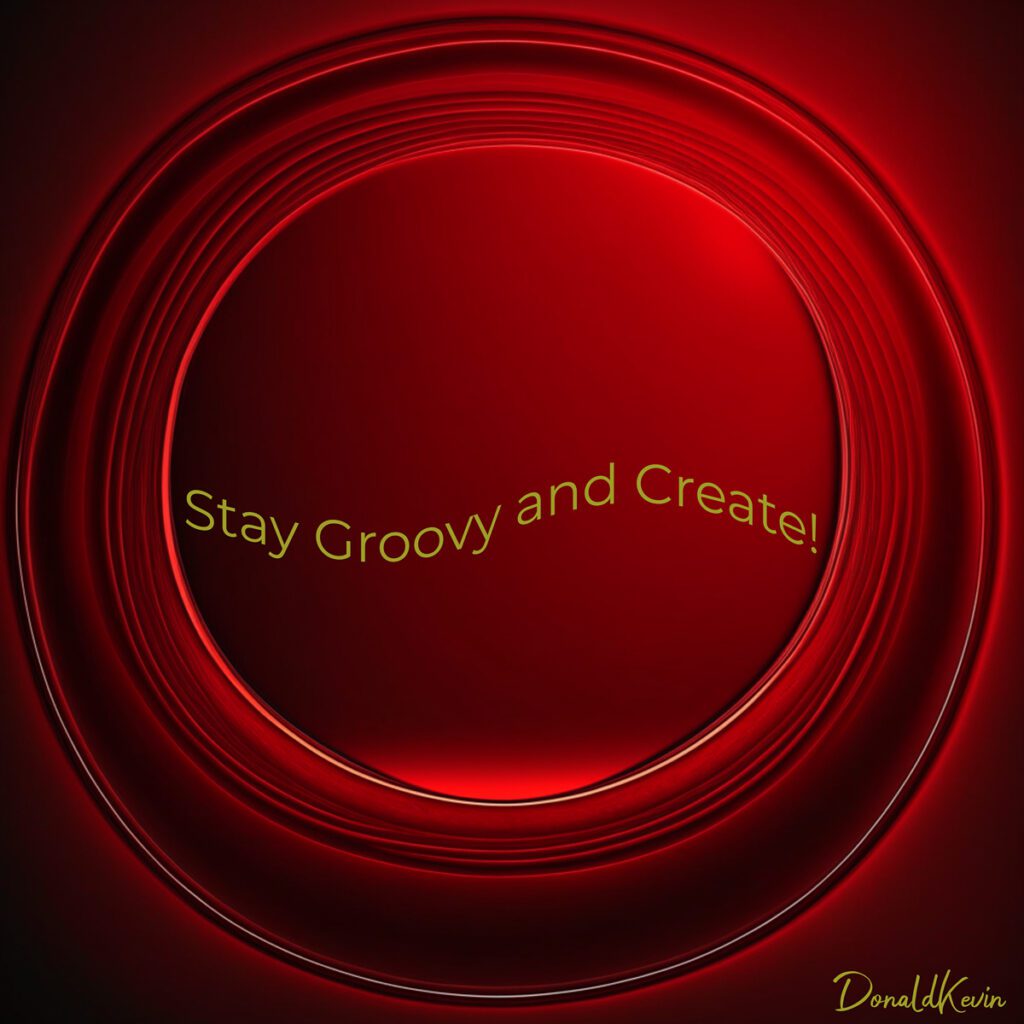
 Hey there! Donald Kevin here, thank you for visiting, and welcome to “Unleashing Creativity: Graphic Design Trends Fall 2023 Part 2.” Are you ready to step into the future? Well, buckle up because in this week’s blog post, we are diving deep into the exciting world of graphic design trends for Fall 2023!
Hey there! Donald Kevin here, thank you for visiting, and welcome to “Unleashing Creativity: Graphic Design Trends Fall 2023 Part 2.” Are you ready to step into the future? Well, buckle up because in this week’s blog post, we are diving deep into the exciting world of graphic design trends for Fall 2023! 






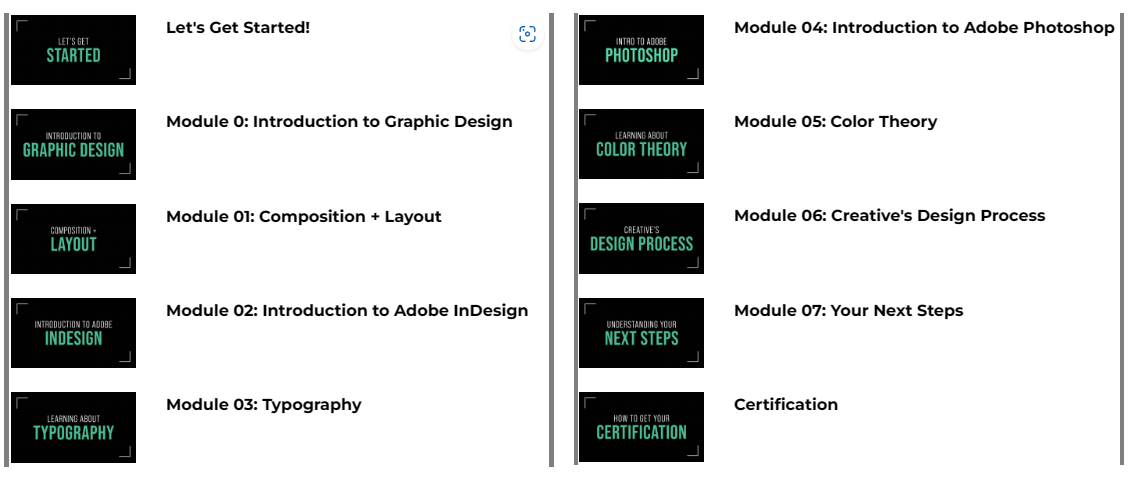

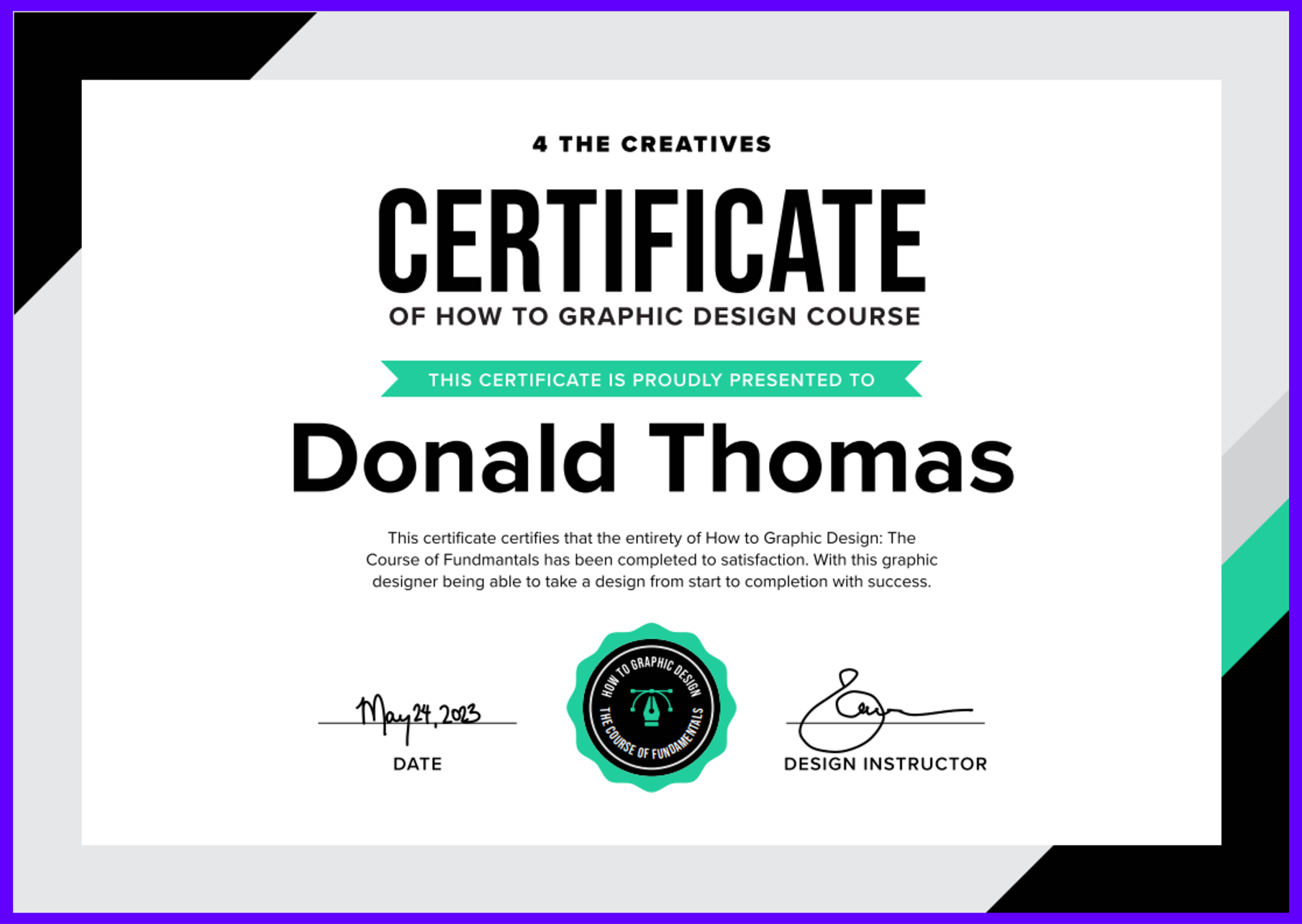
 Hey there and welcome to DonaldKevin.Com and Unleashing Creativity: Graphic Design Trends Fall 2023 Part 1. Since today is the first day of fall what better topic than this to discuss eh? Graphic design trends are constantly evolving, and it’s essential for designers to stay ahead of the curve. Fall 2023 brings with it a fresh crop of game-changing graphic design trends that are sure to unleash your creativity and elevate your designs to new heights. In this article, we will explore the top graphic design trends for Fall 2023, giving you the insights and inspiration you need to create stunning and impactful designs. So, without further ado, let’s dive into the world of graphic design trends Fall 2023!
Hey there and welcome to DonaldKevin.Com and Unleashing Creativity: Graphic Design Trends Fall 2023 Part 1. Since today is the first day of fall what better topic than this to discuss eh? Graphic design trends are constantly evolving, and it’s essential for designers to stay ahead of the curve. Fall 2023 brings with it a fresh crop of game-changing graphic design trends that are sure to unleash your creativity and elevate your designs to new heights. In this article, we will explore the top graphic design trends for Fall 2023, giving you the insights and inspiration you need to create stunning and impactful designs. So, without further ado, let’s dive into the world of graphic design trends Fall 2023! Get ready to step outside the traditional color palette! Fall 2023 is all about embracing bold and vibrant colors that instantly catch the eye and make a powerful statement. Think electric blues, neon greens, and fiery oranges that add an unexpected pop to your designs. These eye-catching shades inject a dose of energy and life into your compositions, leaving a lasting impression on your audience. Buckle up and get ready to unleash your creativity with this exciting trend!
Get ready to step outside the traditional color palette! Fall 2023 is all about embracing bold and vibrant colors that instantly catch the eye and make a powerful statement. Think electric blues, neon greens, and fiery oranges that add an unexpected pop to your designs. These eye-catching shades inject a dose of energy and life into your compositions, leaving a lasting impression on your audience. Buckle up and get ready to unleash your creativity with this exciting trend!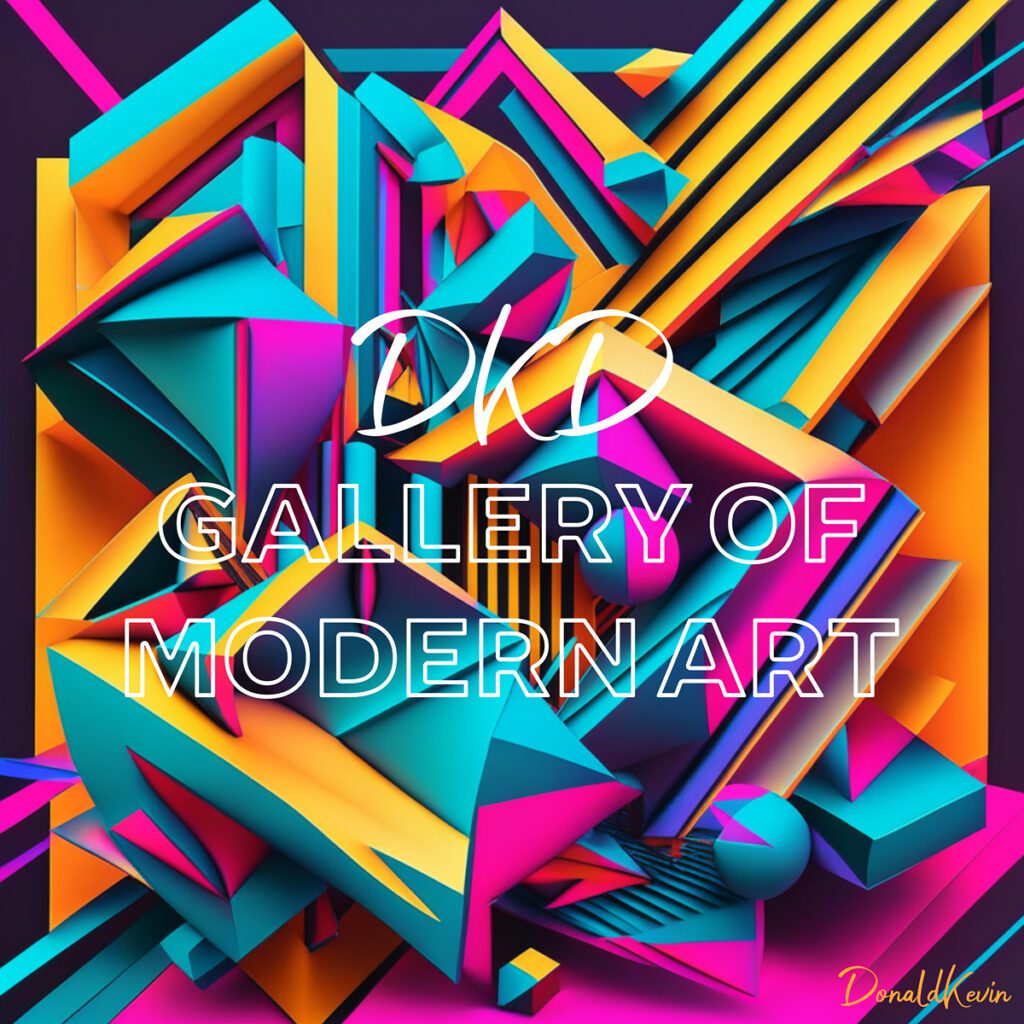
 The use of 3D and abstract illustrations in graphic design offers endless possibilities for creating eye-catching and immersive visuals. As graphic designers we have the ability to experiment with unique perspectives, textures, and dimensions, that can result in striking compositions that captivate the viewer’s attention. Think of a surreal landscape popping out of your screen or a product showcasing its intricate details, almost as if you can see it from all angles. These illustrations bring depth and a sense of realism to the otherwise ordinary, and designers are embracing this exciting medium with open arms.
The use of 3D and abstract illustrations in graphic design offers endless possibilities for creating eye-catching and immersive visuals. As graphic designers we have the ability to experiment with unique perspectives, textures, and dimensions, that can result in striking compositions that captivate the viewer’s attention. Think of a surreal landscape popping out of your screen or a product showcasing its intricate details, almost as if you can see it from all angles. These illustrations bring depth and a sense of realism to the otherwise ordinary, and designers are embracing this exciting medium with open arms.

 Consistency is another key aspect to creating eye-catching social media posts. By maintaining a consistent style, color palette, and overall aesthetic, you can help build brand awareness and recognition among your audience. When followers see a post from your brand on their feed, they should be able to immediately recognize it as yours simply by the look and feel. This consistency not only creates a cohesive visual identity for your brand but also helps to establish trust and credibility.
Consistency is another key aspect to creating eye-catching social media posts. By maintaining a consistent style, color palette, and overall aesthetic, you can help build brand awareness and recognition among your audience. When followers see a post from your brand on their feed, they should be able to immediately recognize it as yours simply by the look and feel. This consistency not only creates a cohesive visual identity for your brand but also helps to establish trust and credibility. In addition to design consistency, it’s also important to maintain a consistent tone of voice across your social media posts. This refers to the way you communicate with your audience and the language you use. Whether you want to be playful and lighthearted or professional and informative, it’s essential to choose a tone that aligns with your brand’s overall personality. Using consistent language and tone helps to establish a sense of familiarity and builds a stronger connection with your audience.
In addition to design consistency, it’s also important to maintain a consistent tone of voice across your social media posts. This refers to the way you communicate with your audience and the language you use. Whether you want to be playful and lighthearted or professional and informative, it’s essential to choose a tone that aligns with your brand’s overall personality. Using consistent language and tone helps to establish a sense of familiarity and builds a stronger connection with your audience.

 Hey there and thank you for visiting DonaldKevin.com. Today we are going to continue with our journey on Graphic Design Tips: How To Create Eye-Catching Social Media Posts Part 3. So then…are you ready to take your social media game to the next level? Look no further! In this third installment of our graphic design tips series, we’ll be diving into the “big 5” social media platforms: Instagram, Facebook, Twitter, LinkedIn, and Pinterest. Get ready to create eye-catching social media posts that will make your followers stop scrolling and start engaging. Whether you’re a seasoned graphic designer or just getting started, these tips are sure to inspire and ignite your creativity. So, grab your design tools and let’s embark on this exciting journey together!
Hey there and thank you for visiting DonaldKevin.com. Today we are going to continue with our journey on Graphic Design Tips: How To Create Eye-Catching Social Media Posts Part 3. So then…are you ready to take your social media game to the next level? Look no further! In this third installment of our graphic design tips series, we’ll be diving into the “big 5” social media platforms: Instagram, Facebook, Twitter, LinkedIn, and Pinterest. Get ready to create eye-catching social media posts that will make your followers stop scrolling and start engaging. Whether you’re a seasoned graphic designer or just getting started, these tips are sure to inspire and ignite your creativity. So, grab your design tools and let’s embark on this exciting journey together!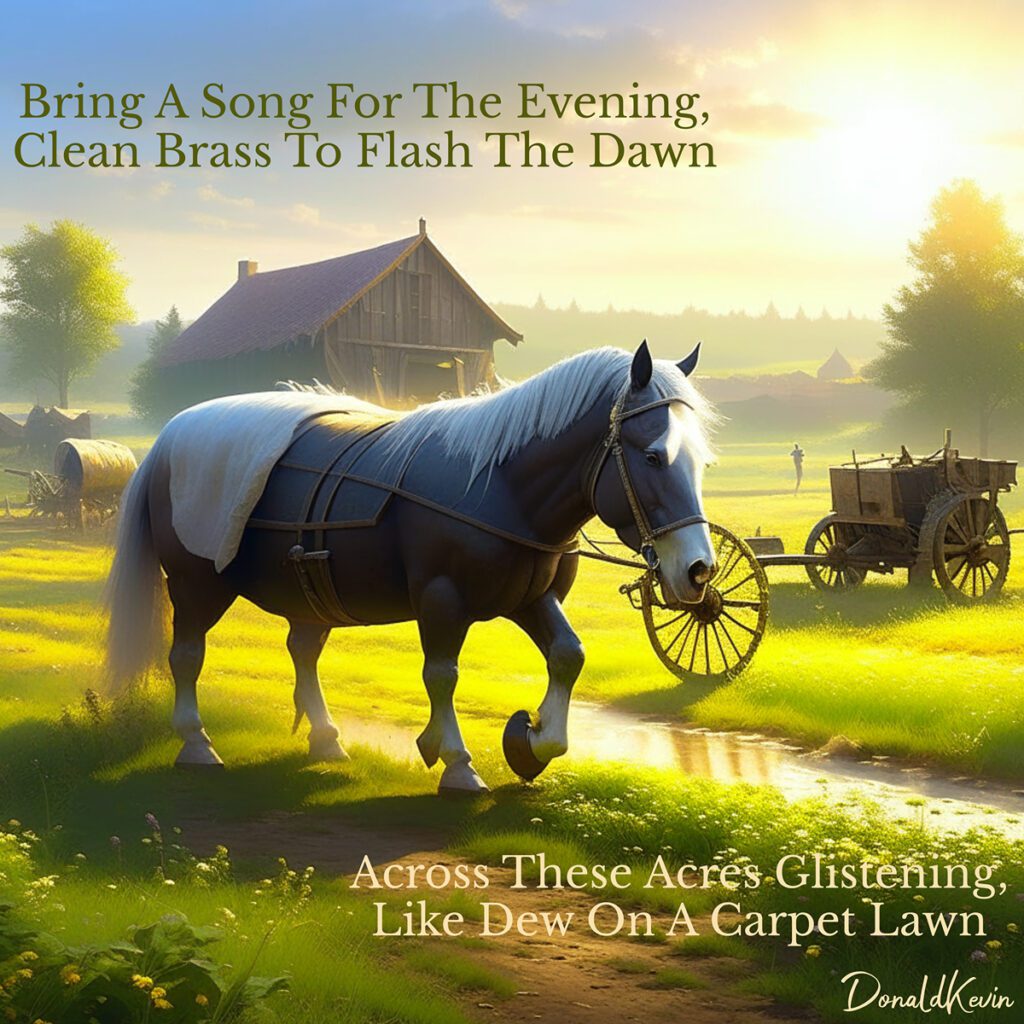
 Hey there and welcome to DonaldKevin.com. Let’s continue with part two of Graphic Design Tips: How To Create Eye-Catching Social Media Posts. Are you ready to take your social media game to the next level? In today’s blog post, we are diving deeper into the world of graphic design to bring you even more tips and tricks on how to create eye-catching social media posts. Whether you’re a business owner looking to boost your online presence or a creative individual wanting to enhance your personal brand, this is the ultimate guide you’ve been waiting for! So buckle up, because we’re about to unleash the secrets behind captivating visuals that will make your social media feed truly stand out from the crowd. Get ready, because your followers won’t be able to scroll past your posts without hitting that like button! Very cool and groovy!
Hey there and welcome to DonaldKevin.com. Let’s continue with part two of Graphic Design Tips: How To Create Eye-Catching Social Media Posts. Are you ready to take your social media game to the next level? In today’s blog post, we are diving deeper into the world of graphic design to bring you even more tips and tricks on how to create eye-catching social media posts. Whether you’re a business owner looking to boost your online presence or a creative individual wanting to enhance your personal brand, this is the ultimate guide you’ve been waiting for! So buckle up, because we’re about to unleash the secrets behind captivating visuals that will make your social media feed truly stand out from the crowd. Get ready, because your followers won’t be able to scroll past your posts without hitting that like button! Very cool and groovy! Color psychology is particularly important when it comes to social media posts. With the constant stream of content bombarding users, it’s crucial to make your posts stand out. By understanding the impact of color on social media, you can strategically select hues that align with your brand and message. For instance, blue is often associated with trust and reliability, making it a popular choice for financial institutions or healthcare providers, while green represents growth and freshness, ideal for eco-friendly brands. By tapping into the psychology of color, you can create a visual identity that resonates with your target audience.
Color psychology is particularly important when it comes to social media posts. With the constant stream of content bombarding users, it’s crucial to make your posts stand out. By understanding the impact of color on social media, you can strategically select hues that align with your brand and message. For instance, blue is often associated with trust and reliability, making it a popular choice for financial institutions or healthcare providers, while green represents growth and freshness, ideal for eco-friendly brands. By tapping into the psychology of color, you can create a visual identity that resonates with your target audience. When it comes to typography in graphic design for social media posts, it is important to understand that different fonts evoke different emotions and convey different messages. For instance, a bold and stylish typeface font may be suitable for announcing a sale or promotion, while a more elegant and sophisticated font may be better suited for branding purposes. The choice of typography should align with the overall theme and purpose of the post, ensuring consistency and coherence in the design.
When it comes to typography in graphic design for social media posts, it is important to understand that different fonts evoke different emotions and convey different messages. For instance, a bold and stylish typeface font may be suitable for announcing a sale or promotion, while a more elegant and sophisticated font may be better suited for branding purposes. The choice of typography should align with the overall theme and purpose of the post, ensuring consistency and coherence in the design. One commonly used composition technique is the rule of thirds. This technique involves dividing an image or graphic into a grid of nine equal parts, with intersecting lines. By placing key elements of your post along these lines or at the points where they intersect, you can create a visually balanced and engaging composition. This technique draws the viewer’s attention to the most important parts of your post, making it more likely to be noticed and remembered.
One commonly used composition technique is the rule of thirds. This technique involves dividing an image or graphic into a grid of nine equal parts, with intersecting lines. By placing key elements of your post along these lines or at the points where they intersect, you can create a visually balanced and engaging composition. This technique draws the viewer’s attention to the most important parts of your post, making it more likely to be noticed and remembered.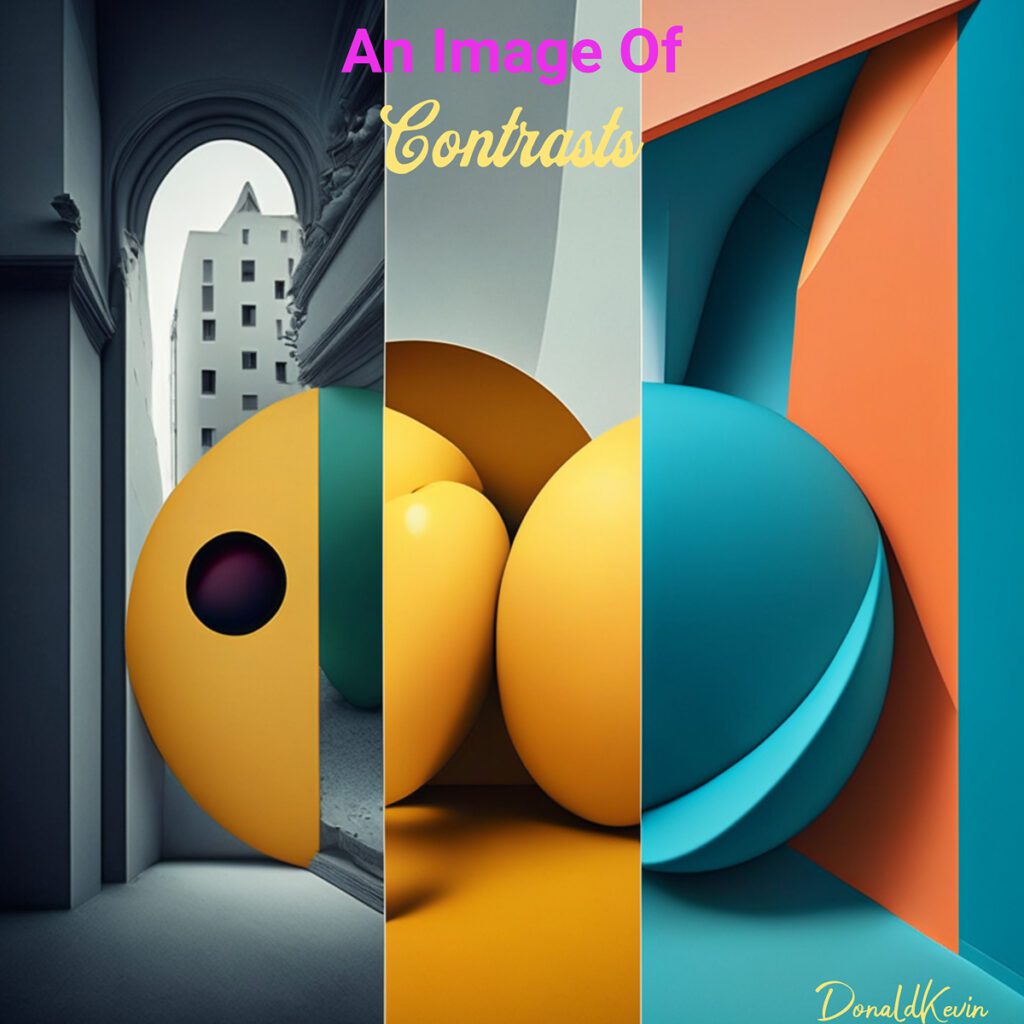
 In conclusion, incorporating color psychology, typography, composition techniques, contrast, and white space into your social media posts can truly transform your online presence. By understanding the power of colors and their impact on emotions, carefully selecting typeface and fonts that reflect your brand’s personality, mastering composition techniques to guide the viewer’s eye, creating captivating contrasts, and utilizing strategic white space, you can create eye-catching social media posts that will leave a lasting impression on your audience. So, get ready to unleash your creativity and take your graphic design skills to the next level. Let your excitement shine through your captivating social media posts and watch as your online presence and engagement take off and skyrocket. Happy designing!
In conclusion, incorporating color psychology, typography, composition techniques, contrast, and white space into your social media posts can truly transform your online presence. By understanding the power of colors and their impact on emotions, carefully selecting typeface and fonts that reflect your brand’s personality, mastering composition techniques to guide the viewer’s eye, creating captivating contrasts, and utilizing strategic white space, you can create eye-catching social media posts that will leave a lasting impression on your audience. So, get ready to unleash your creativity and take your graphic design skills to the next level. Let your excitement shine through your captivating social media posts and watch as your online presence and engagement take off and skyrocket. Happy designing! Hey there and thank you for visiting DonaldKevin.com. I have a question for you…Do you want to create social media posts with a little more oomph? A little more pizzazz? Well, get ready to level up your game because, in this four-part series, we’ll break out the magnifying glass, search out, and discover some graphic design treasure tips that will make your social media posts pop! Whether you’re a business owner, influencer, or simply someone who wants to stand out from the crowd, you’ll be covered. In this four-part series, we’ll share some exciting tips and tricks on how to create eye-catching social media posts that will leave your followers in awe. So grab your creative hat and let’s dive into the world of graphic design!
Hey there and thank you for visiting DonaldKevin.com. I have a question for you…Do you want to create social media posts with a little more oomph? A little more pizzazz? Well, get ready to level up your game because, in this four-part series, we’ll break out the magnifying glass, search out, and discover some graphic design treasure tips that will make your social media posts pop! Whether you’re a business owner, influencer, or simply someone who wants to stand out from the crowd, you’ll be covered. In this four-part series, we’ll share some exciting tips and tricks on how to create eye-catching social media posts that will leave your followers in awe. So grab your creative hat and let’s dive into the world of graphic design!
 When it comes to social media, visuals are everything! With the average attention span decreasing, it’s vital to capture your audience’s attention within seconds. This is where graphic design hacks come into play. By creating eye-catching visuals, you can make your posts stand out from the crowd and leave a lasting impression. Experiment with bold colors, striking typography, and captivating images to create a visual feast that stops users from scrolling and makes them want to engage with your content.
When it comes to social media, visuals are everything! With the average attention span decreasing, it’s vital to capture your audience’s attention within seconds. This is where graphic design hacks come into play. By creating eye-catching visuals, you can make your posts stand out from the crowd and leave a lasting impression. Experiment with bold colors, striking typography, and captivating images to create a visual feast that stops users from scrolling and makes them want to engage with your content. Consistency plays a significant role in building a strong brand presence on social media. By maintaining a consistent visual style, you can establish brand recognition and create a cohesive look across all your social media platforms. Use the same color palette, fonts, and design elements in your posts to create a unified brand identity. This consistency will not only make your content instantly recognizable but also help establish trust and credibility with your audience.
Consistency plays a significant role in building a strong brand presence on social media. By maintaining a consistent visual style, you can establish brand recognition and create a cohesive look across all your social media platforms. Use the same color palette, fonts, and design elements in your posts to create a unified brand identity. This consistency will not only make your content instantly recognizable but also help establish trust and credibility with your audience. Graphic design in social media is like the secret ingredient that takes a post from ordinary to extraordinary. It allows brands and individuals to create visually appealing content that stands out in a crowded social media landscape. With well-designed graphics, posts become more memorable, shareable, and effective in conveying messages. From a beautifully designed logo to aesthetically pleasing templates, graphic design adds a professional touch to social media posts and helps establish a brand’s visual identity. It enables businesses to communicate their values, products, and services in a visually compelling manner, ultimately attracting and engaging their target audience.
Graphic design in social media is like the secret ingredient that takes a post from ordinary to extraordinary. It allows brands and individuals to create visually appealing content that stands out in a crowded social media landscape. With well-designed graphics, posts become more memorable, shareable, and effective in conveying messages. From a beautifully designed logo to aesthetically pleasing templates, graphic design adds a professional touch to social media posts and helps establish a brand’s visual identity. It enables businesses to communicate their values, products, and services in a visually compelling manner, ultimately attracting and engaging their target audience. Hey there and welcome to DonaldKevin.com, fellow creative minds! Have you ever wondered how a simple image can speak volumes and convey powerful messages? Well, today as we dive into the fascinating world of graphic design, let’s take a look at where the world of art and storytelling collide. Whether you’re a seasoned designer or just starting to dip your toes into this colorful universe, this blog post is here to unravel the mysteries behind graphic design and explore how it breathes life into ideas. So, grab your favorite beverage, sit back, and let’s embark on a creative adventure together!
Hey there and welcome to DonaldKevin.com, fellow creative minds! Have you ever wondered how a simple image can speak volumes and convey powerful messages? Well, today as we dive into the fascinating world of graphic design, let’s take a look at where the world of art and storytelling collide. Whether you’re a seasoned designer or just starting to dip your toes into this colorful universe, this blog post is here to unravel the mysteries behind graphic design and explore how it breathes life into ideas. So, grab your favorite beverage, sit back, and let’s embark on a creative adventure together!
 Humans are visual creatures, and our brains process visual information much faster than text. Visuals have the ability to evoke emotions, tell stories, and communicate complex ideas effortlessly. Graphic design harnesses this power by using a combination of visuals, colors, and typography to create a seamless narrative that resonates with the audience. This is why so many article writers, myself included, use images in their blog posts. Not only do images help the post itself to flow, but if done effectively it helps to drive home the point one is trying to make in the article or the paragraph within the article. Besides, who doesn’t like to look at pictures?
Humans are visual creatures, and our brains process visual information much faster than text. Visuals have the ability to evoke emotions, tell stories, and communicate complex ideas effortlessly. Graphic design harnesses this power by using a combination of visuals, colors, and typography to create a seamless narrative that resonates with the audience. This is why so many article writers, myself included, use images in their blog posts. Not only do images help the post itself to flow, but if done effectively it helps to drive home the point one is trying to make in the article or the paragraph within the article. Besides, who doesn’t like to look at pictures?
 Graphic design is like the secret sauce that brings ideas to life. It’s not just about making things look pretty; it’s about creating a visual story that captures people’s attention. With the use of consistent colors, typeface, fonts, and images, graphic designers can establish a brand’s identity and convey a specific message. So, next time you see a stunning logo or a beautifully designed website, remember that there’s a lot more to it than meets the eye.
Graphic design is like the secret sauce that brings ideas to life. It’s not just about making things look pretty; it’s about creating a visual story that captures people’s attention. With the use of consistent colors, typeface, fonts, and images, graphic designers can establish a brand’s identity and convey a specific message. So, next time you see a stunning logo or a beautifully designed website, remember that there’s a lot more to it than meets the eye. Nowadays, it’s all about standing out from the crowd. And that’s where graphic design comes into play. By creating a cohesive visual narrative, designers can help a brand make a lasting impression on its audience. Whether it’s through a stunning social media post or an eye-catching brochure, graphic design is the key to creating a memorable experience. So, don’t underestimate the power of good design – it can truly make a world of difference.
Nowadays, it’s all about standing out from the crowd. And that’s where graphic design comes into play. By creating a cohesive visual narrative, designers can help a brand make a lasting impression on its audience. Whether it’s through a stunning social media post or an eye-catching brochure, graphic design is the key to creating a memorable experience. So, don’t underestimate the power of good design – it can truly make a world of difference.
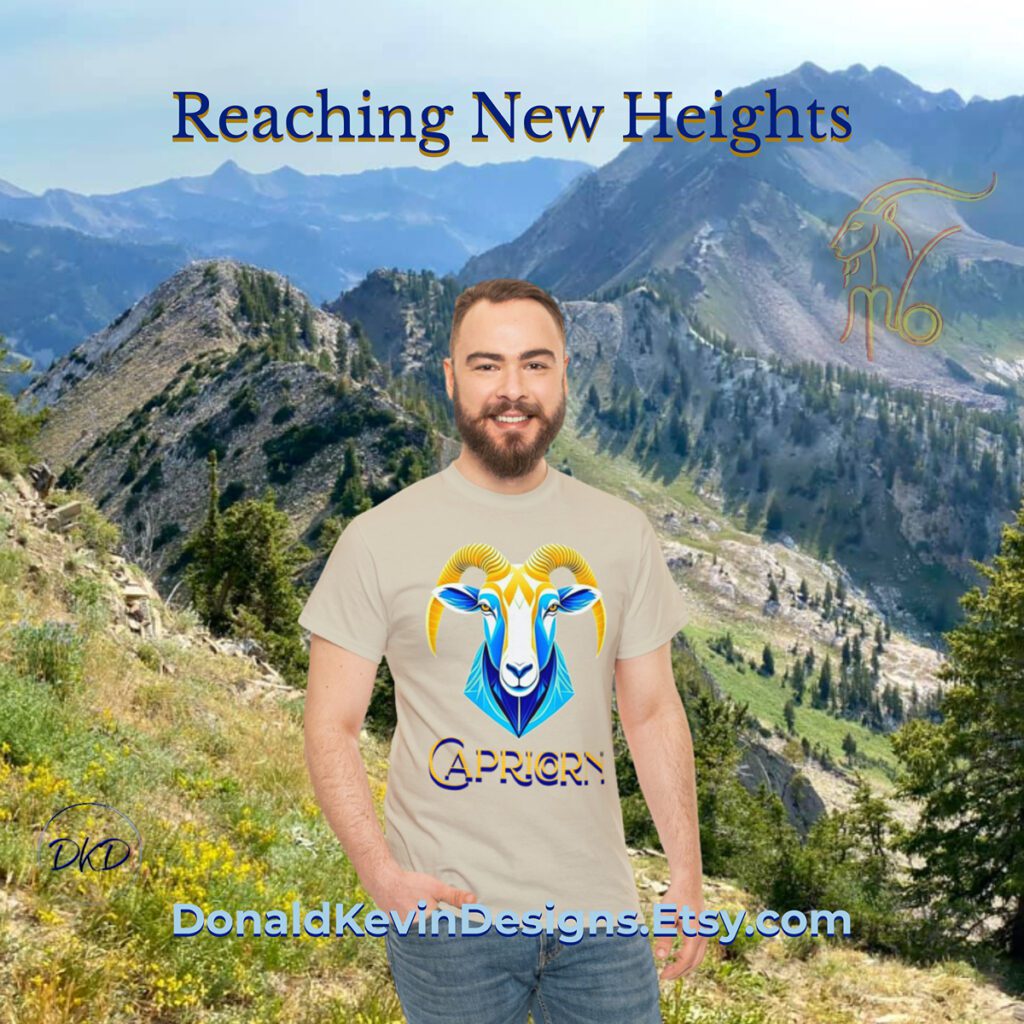
 Hey there and welcome to DonaldKevin.com. Since I posted an article last week, Graphic Design 101: Tips and Tricks For Beginners, I thought I’d continue on this path and write a little more about typography. I posted an article a few weeks back touching on the subject of using typeface in graphic design and thought I’d take it a little further this week. You can read that article here >>>>
Hey there and welcome to DonaldKevin.com. Since I posted an article last week, Graphic Design 101: Tips and Tricks For Beginners, I thought I’d continue on this path and write a little more about typography. I posted an article a few weeks back touching on the subject of using typeface in graphic design and thought I’d take it a little further this week. You can read that article here >>>> 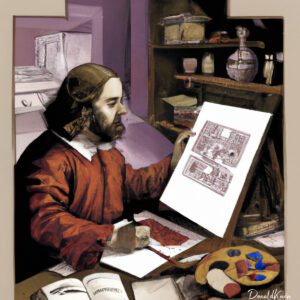 Typography plays a crucial role in graphic design, yet it often goes unnoticed. It is the unsung hero that can make or break the visual appeal and effectiveness of any design. Understanding the power of typography is essential for designers who want to create stunning visuals that capture attention and convey a message effectively. In this article, we will explore the art of using typography in graphic design, delve into the difference between fonts and typefaces, uncover the secrets of finding contrasting typefaces, and discuss which typefaces work best for headings and text bodies.
Typography plays a crucial role in graphic design, yet it often goes unnoticed. It is the unsung hero that can make or break the visual appeal and effectiveness of any design. Understanding the power of typography is essential for designers who want to create stunning visuals that capture attention and convey a message effectively. In this article, we will explore the art of using typography in graphic design, delve into the difference between fonts and typefaces, uncover the secrets of finding contrasting typefaces, and discuss which typefaces work best for headings and text bodies. Before we dive deeper into the importance of typography in graphic design, it’s crucial to understand the difference between fonts and typefaces. In simple terms, a typeface is a design concept that includes a range of fonts within it. Fonts, on the other hand, are the individual styles within a typeface, such as bold, italic, or regular. For example, Montserrat is a typeface, and Montserrat Regular and Montserrat Bold are fonts within that typeface. As a matter of fact, Montserrat is the typeface I use for the text body of my articles. I love it. It’s one of my favorites. And you thought Montserrat was just a vacation destination.
Before we dive deeper into the importance of typography in graphic design, it’s crucial to understand the difference between fonts and typefaces. In simple terms, a typeface is a design concept that includes a range of fonts within it. Fonts, on the other hand, are the individual styles within a typeface, such as bold, italic, or regular. For example, Montserrat is a typeface, and Montserrat Regular and Montserrat Bold are fonts within that typeface. As a matter of fact, Montserrat is the typeface I use for the text body of my articles. I love it. It’s one of my favorites. And you thought Montserrat was just a vacation destination. One of the secrets to creating visually appealing designs is to use contrasting typefaces. Contrasting typefaces add visual interest, balance, and hierarchy to your design. When selecting contrasting typefaces, there are a few key factors to consider:
One of the secrets to creating visually appealing designs is to use contrasting typefaces. Contrasting typefaces add visual interest, balance, and hierarchy to your design. When selecting contrasting typefaces, there are a few key factors to consider:

